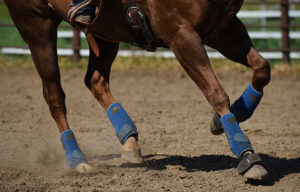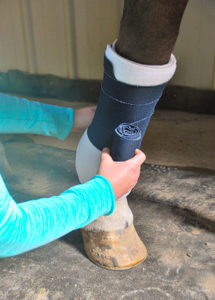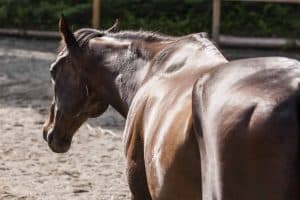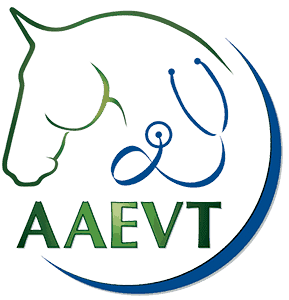Shivers in the Horse: A Review
Shivers has been recognized by horse owners for more than a century and refers to a chronic nervous or neuromuscular condition that in a 1962 text was said to be "as common as dirt." This statement referred to the period when draft horse populations were much larger than today. John Baird, BVSc, PhD, of the University of Guelph’s Ontario Veterinary College, presented information on "shivers," at the AAEP Convention 2006.
Besides drafts and draft crosses, shivers is recognized also in Warmbloods and Warmblood crosses, as well as occasional light horse breeds such as Quarter Horses, Standardbreds, and Thoroughbreds. It is rare to find it in pony breeds.
Typically, shivers starts out as difficult to detect, and it progressively worsens with age. The horse experiences involuntary muscle spasms or jerky movements in the pelvis, one or both hind limbs, and tail. Initially, it seems a horse is snatching its leg away when asked to pick up a foot for cleaning.
Signs are most evident when an affected horse is asked to back up, move quickly, or when lifting a hind leg for hoof cleaning or while being shod. The horse abruptly raises the hind leg in a partially flexed position held slightly out from the body, and he is unable to put it down. This posture lasts from seconds to minutes. As the limb is slowly replaced to the ground, the horse might experience spasms again, especially if asked to move backward. The degree of associated tail elevation is variable. Usually, signs are not elicited by asking a shivers horse to move forward
Create a free account with TheHorse.com to view this content.
TheHorse.com is home to thousands of free articles about horse health care. In order to access some of our exclusive free content, you must be signed into TheHorse.com.
Start your free account today!
Already have an account?
and continue reading.

Written by:
Nancy S. Loving, DVM
Related Articles
Stay on top of the most recent Horse Health news with















